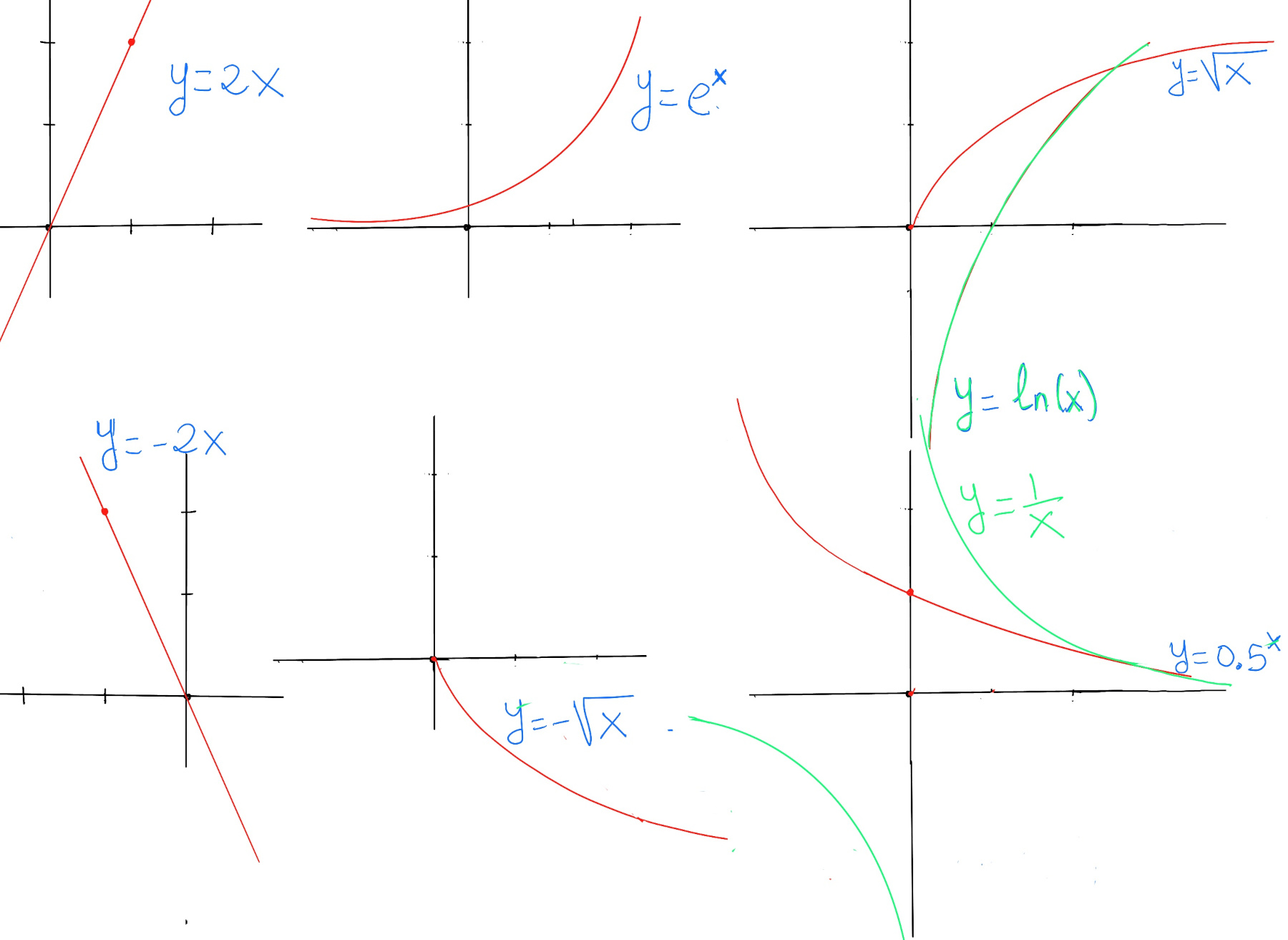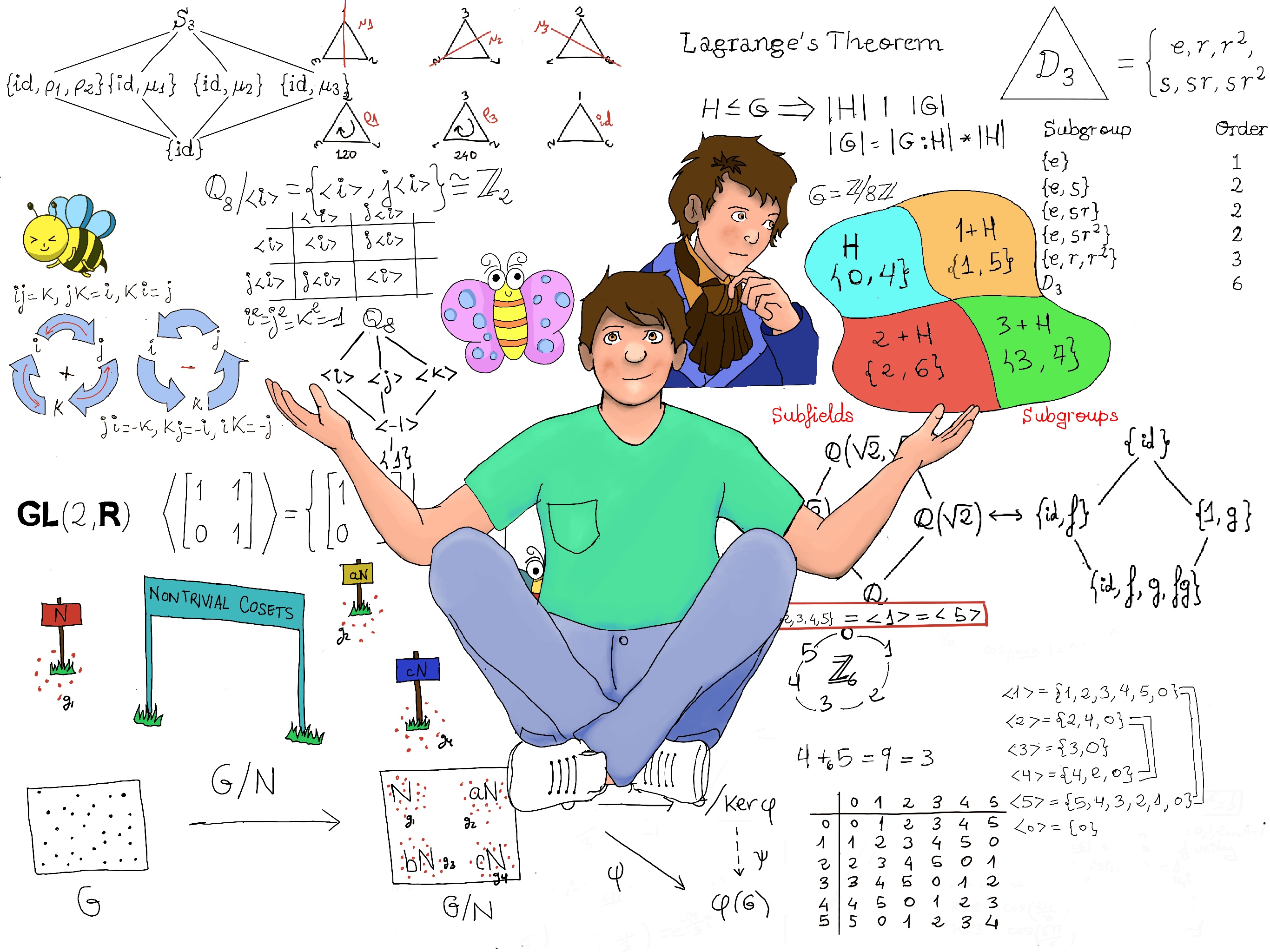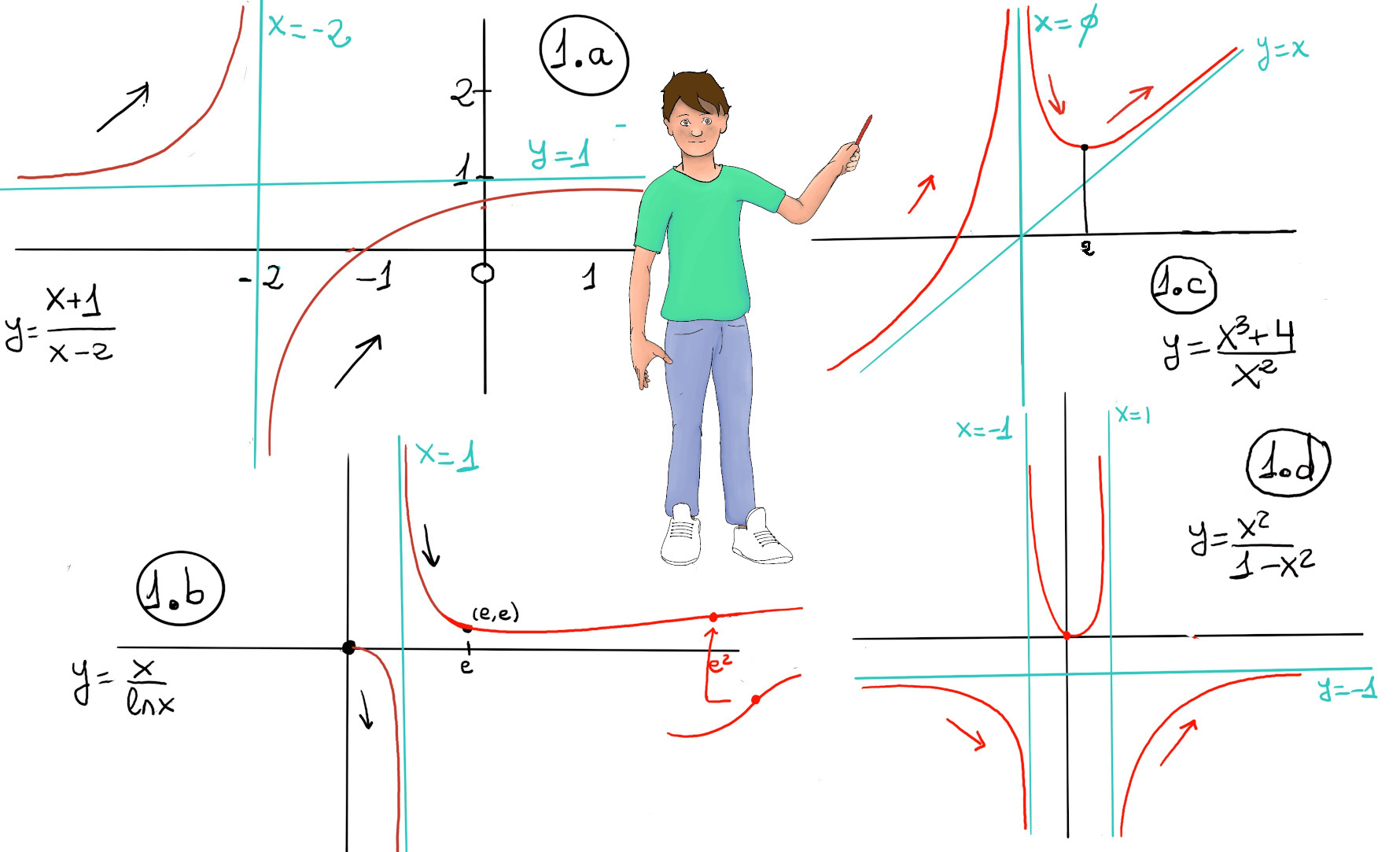
|
 |
 |
|
 |
All you need is y = 1/x (x>0), x^2+y^2=9, y = |2x|, x = -3|siny|.
Definition. A function f is a rule, relationship, or correspondence that assigns to each element of one set (x ∈ D), called the domain, exactly one element of a second set, called the range (y ∈ E).
The pair (x, y) is denoted as y = f(x). Typically, the sets D and E will be both the set of real numbers, ℝ.
Graphing functions involves the visual representation of a curve that reflects the behavior of a mathematical function on a coordinate plane, also known as the Cartesian plane. It is a two-dimensional space defined by two axes - the x-axis (horizontal) and the y-axis (vertical).
A systematic approach to graphing a function begins by constructing a table containing selected input values and their corresponding output values. By extending this table, we can plot the points on the coordinate plane and observe the pattern they form. Connecting these points reveals the shape of the curve, allowing us to gain insights into the behavior of the function across its domain. This process provides a visual means of understanding the relationships between different variables and aids in interpreting the overall characteristics of the function.
A monotonic function is a mathematical function that maintains a consistent direction of change on its domain, either entirely increasing (monotonic increasing) or entirely decreasing (monotonic decreasing).
Let f be a function defined on some interval I. f increases on an interval I if f(b) >= f(a) ∀b > a, a,b ∈ I. If f(b) > f(a) ∀b > a, a, b ∈ I, the function is said to be strictly increasing on I.
Examples: f(x) = 2x, the exponential function f(x) = ex, the natural logarithm function f(x) = ln(x), and the square root function f(x) = $\sqrt{x}$ (for x ≥ 0) are strictly increasing functions.
Conversely, f decreases on an interval I if f(b) <= f(a) ∀b > a, a, b ∈ I. If f(b) < f(a) ∀b > a, a, b ∈ I, the function is said to be strictly decreasing. Finally, f is said to be constant on an interval I if f(a) = f(b) ∀a, b ∈ I.
Examples. f(x) = -2x, f(x) = $-\sqrt{x}$, f(x) = 0.5x (this is known as exponential decay, that is, exponential functions with a base between 0 and 1), the reciprocal function f(x) = 1⁄x are strictly decreasing. f(x) = 3, f(x) = 7 are constant functions.

Geometrically, a function is increasing or decreasing when, read left to right (as you move from left to right along its graph), the graph is going up (the function rises or remains constant) or down (the function falls or remains constant) respectively. It is constant when its graph is flat.
A function is increasing when the graph of the function rises from left to right, i.e., the y-value increases as the x-value increases. More formally, given any x1, x2 from an interval I with x1 < x2 (∀x1, x2 ∈ I, x1 < x2), f(x1) < f(x2) (figures 1.a., 1.b).
A function is decreasing when the graph of the function decreases from left to right, i.e., the y-value decreases as the x-value increases. More formally, given any x1, x2 from an interval I with x1 < x2 (∀x1, x2 ∈ I, x1 > x2), f(x1) < f(x2). 
The derivative of the function f(x) is used to determine whether a function is increasing, decreasing or constant on an interval.
If f’(x) > 0 for every x on some interval I (∀x ∈ I), then f(x) is increasing on this interval. If f’(x) < 0 for every x on some interval I (∀x ∈ I), then f(x) is decreasing on this interval. If f’(x) = 0 for every x on some interval I (∀x ∈ I), then f(x) is constant on this interval. In other words, the intervals where a function is increasing (or decreasing) correspond to the intervals where its derivative is positive (or negative). 
Definition. A critical point is a point in the domain of the function where the function is either not differentiable or the derivative is equal to zero. The value of the function at a critical point is called a critical value.

f(x) = 3x +5, f’(x) = 3 ⇒ f’(x) > 0 ⇒ f is increasing ↗. All linear functions are either increasing or decreasing over their entire domain. A linear function is a function of the form y = mx + b, where m is the slope of the line and b is the y-intercept. The slope determines whether the linear function is increasing or decreasing. If the slope is positive, the line is increasing. If the slope is negative, the line is decreasing.
f(x) = (x -5)2 (Figure i).
f’(x) = 2·(x-5).
Critical points: f’(x) = 0 ⇒ 2(x-5) = 0 ↭ x = 5.
The graph of a quadratic function ax2 + bx + c is a parabola. It has an extreme point, called the vertex where the curve changes direction.
If the parabola opens upwards (a > 0), the vertex represents the lowest point on the curve and its y-coordinate is the minimum value of the quadratic function. If the parabola opens downwards (a < 0), the vertex represents the highest point on the curve, and its y-coordinate is the maximum value. In either case, the vertex is a turning point on the graph. The graph is also symmetric with a vertical line drawn through the vertex, called the axis of symmetry $x = \frac{-b}{2a}$, So, the graph of the function is increasing on one side of the axis and decreasing on the other side.
a > 0, Domain(f) = ℝ, Range: y ≥ f($\frac{-b}{2a}$), f is decreasing to the left of x = $\frac{-b}{2a}$ (minimum) and increasing to the right of x = $\frac{-b}{2a}$. a < 0, Domain(f) = ℝ, Range: y ≤ f($\frac{-b}{2a}$), f is increasing to the left of x = $\frac{-b}{2a}$ (maximum) and decreasing to the right of x = $\frac{-b}{2a}$.

f’(x) = $e^{-x}-xe^{-x} = e^{-x}(1-x).$
Critical points: f’(x) = 0 ⇒[The range of the exponential function is all positive real numbers] 1 -x = 0 ↭ x = 1.
f’(x) = 3x2 +6x -9 = 3·(x2 +2x -3) = 3·(x +3)(x -1).
Critical points: f’(x) = 0 ⇒ 3·(x +3)(x -1) = 0 ↭ x = -3 or 1, and so there are three intervals to investigate.

f’(x) = 6x2 + 6x -36 = 6(x2 +x -6) = 6·(x+3)·(x-2).
Critical points: f’(x) = 0 ⇒ 6·(x+3)·(x-2) = 0 ↭ x = -3 or 2.
 f’(x) = 3 -3x2 = 3(1-x2) = 3(1-x)(1+x). Critical points x = ±1, f(1)=2, f(-1-)=-2.
f’(x) = $\frac{1}{(x+2)^2}$ > 0 ∀ x ∈ ℝ, x ≠ -2 ⇒ f is increasing (-∞, -2) and (-2, ∞).
Critical points are those where the derivate is zero or the derivate is not defined, e.g., in our example, x = -2.
The plot is shown in Figure 1.a.

Another example because you can never have enough of what you don’t really need 😄.
Domain = ℝ - {0}. f is not defined at x = 0.
f’(x) = $\frac{3x^{4}-(x^{3}+4)2x}{x^{4}}= \frac{3x^{4}-2x^{4}-8x}{x^{4}}= \frac{x^{3}-8}{x^{3}}$.
The plot is shown in Figure 1.c.
